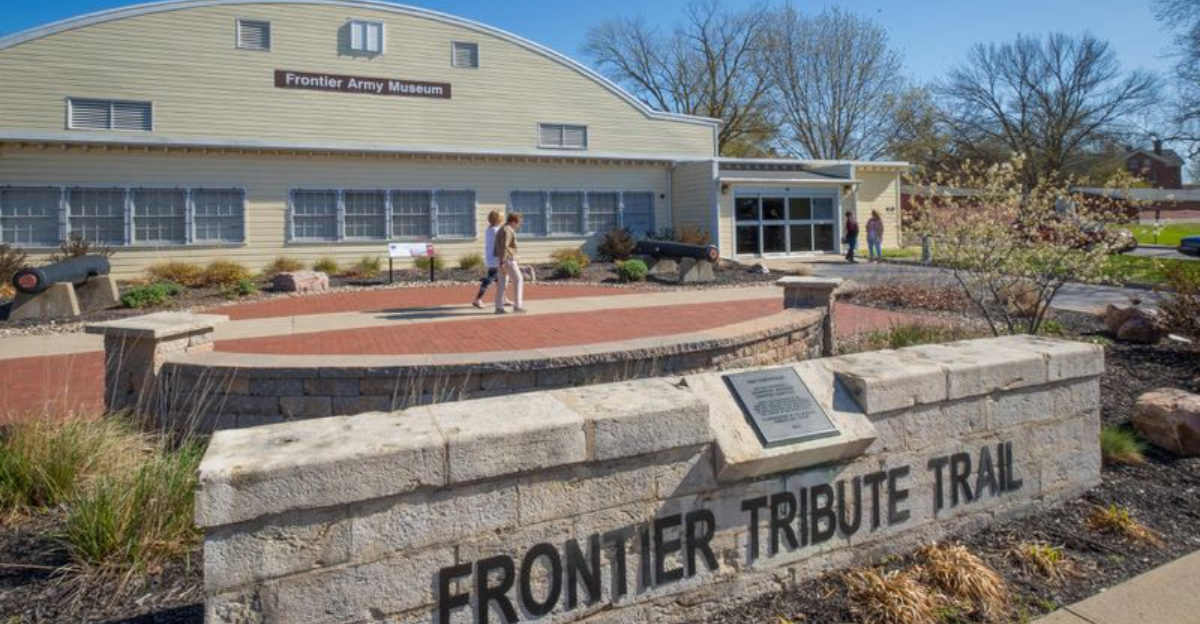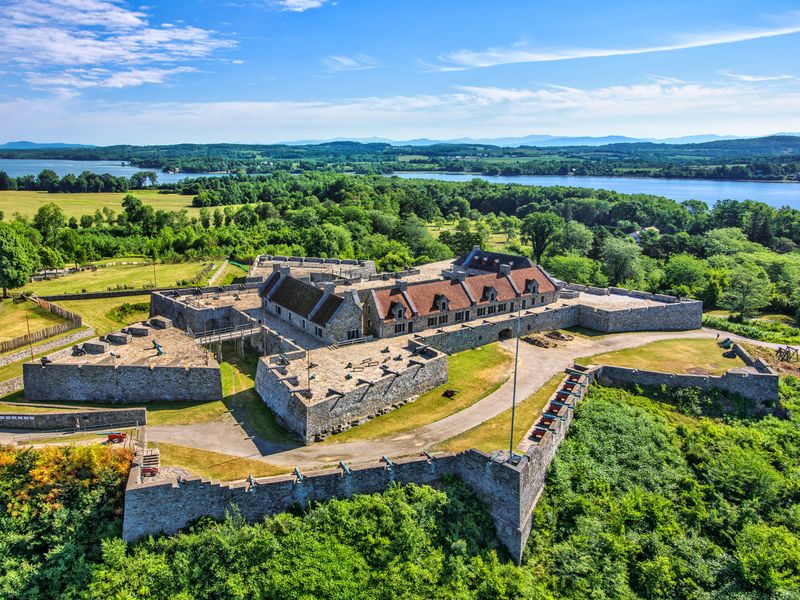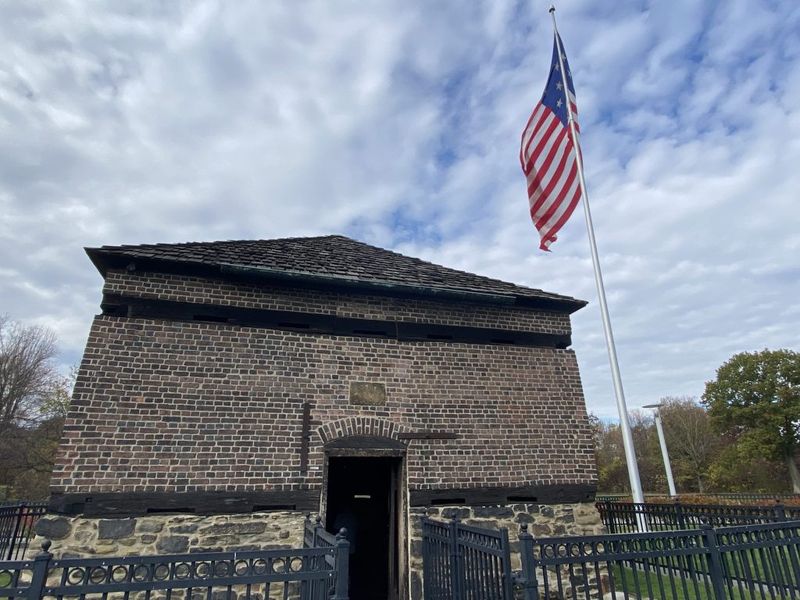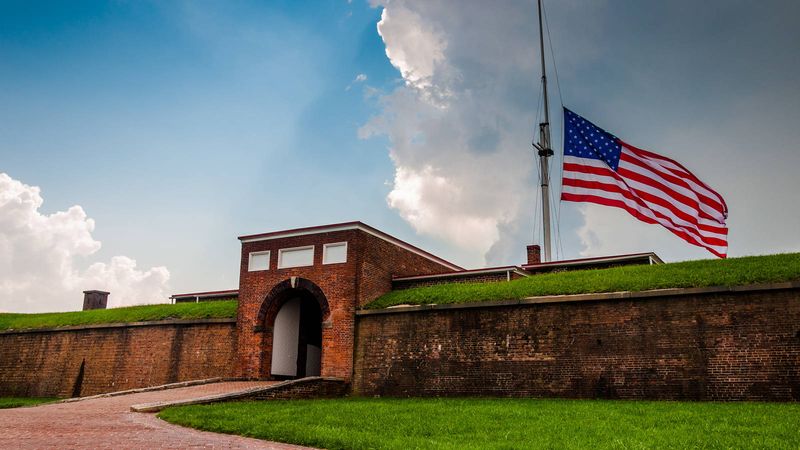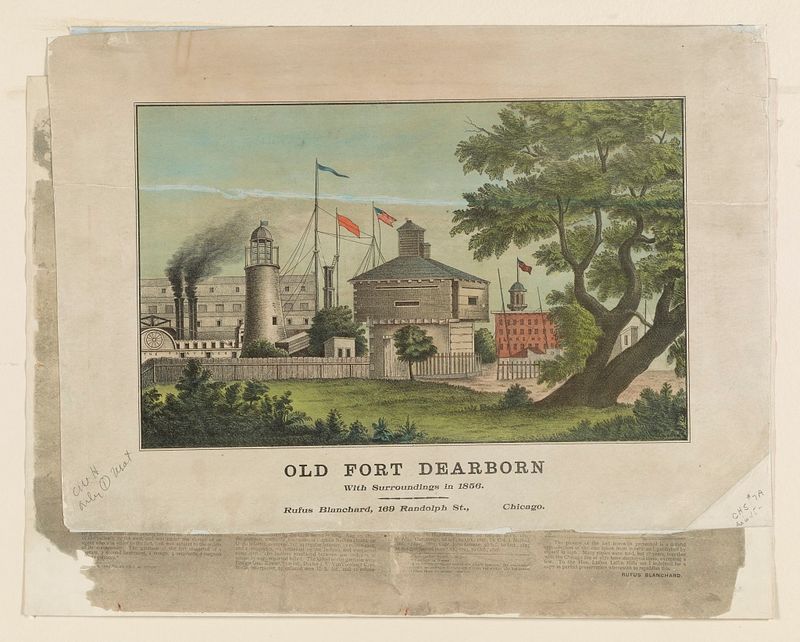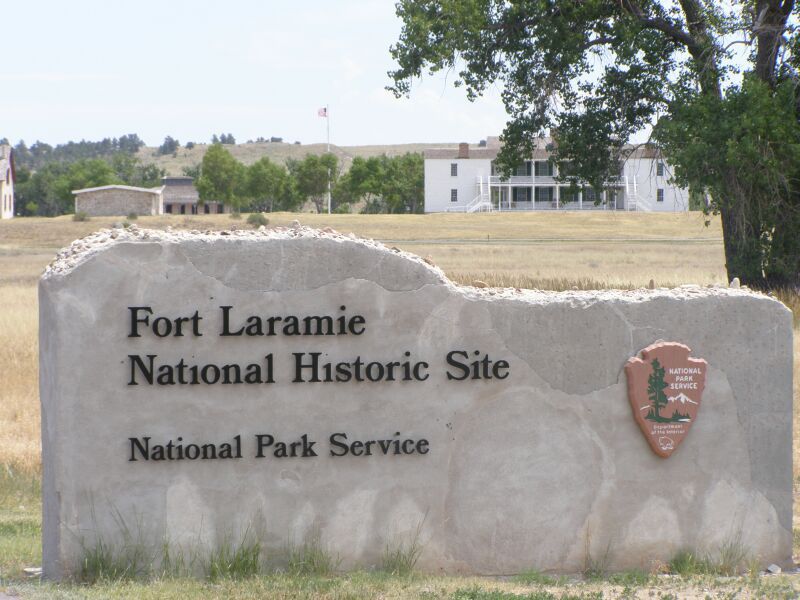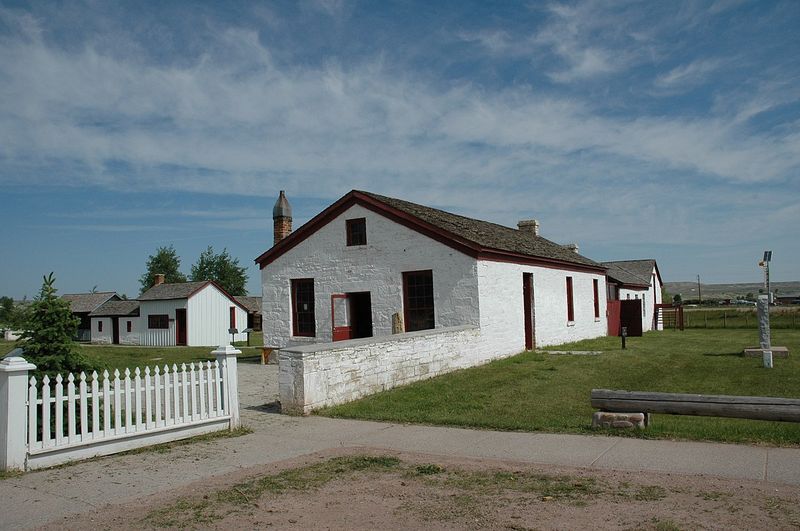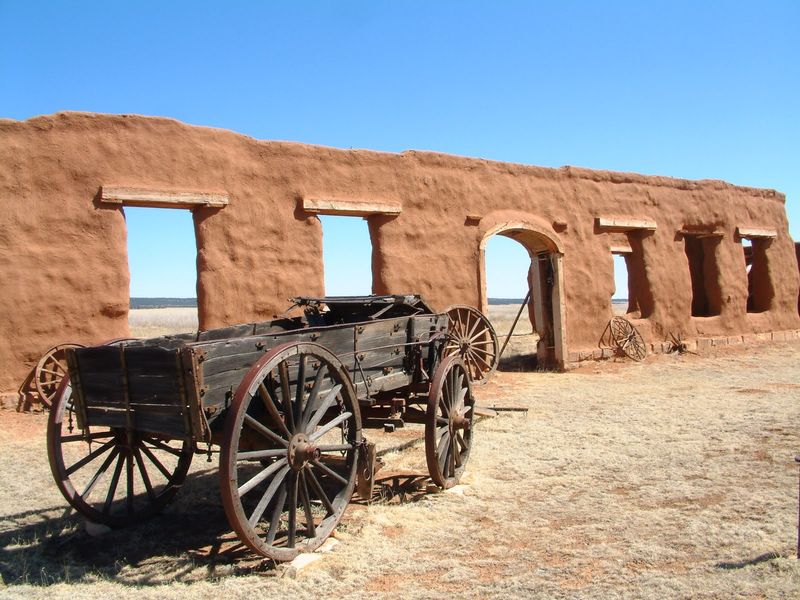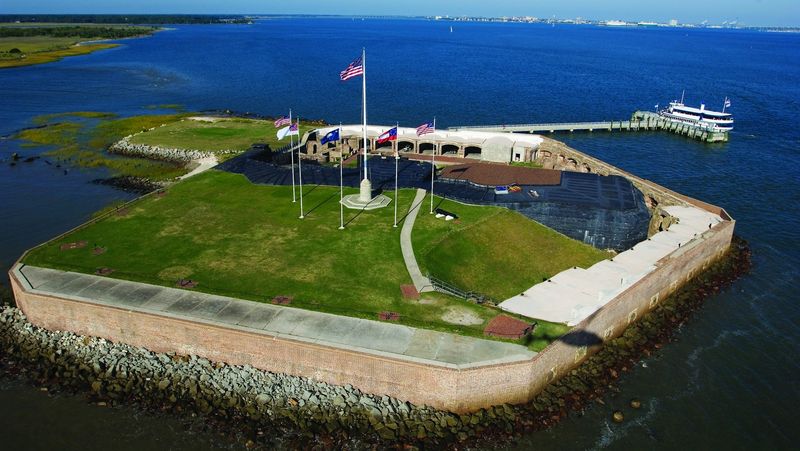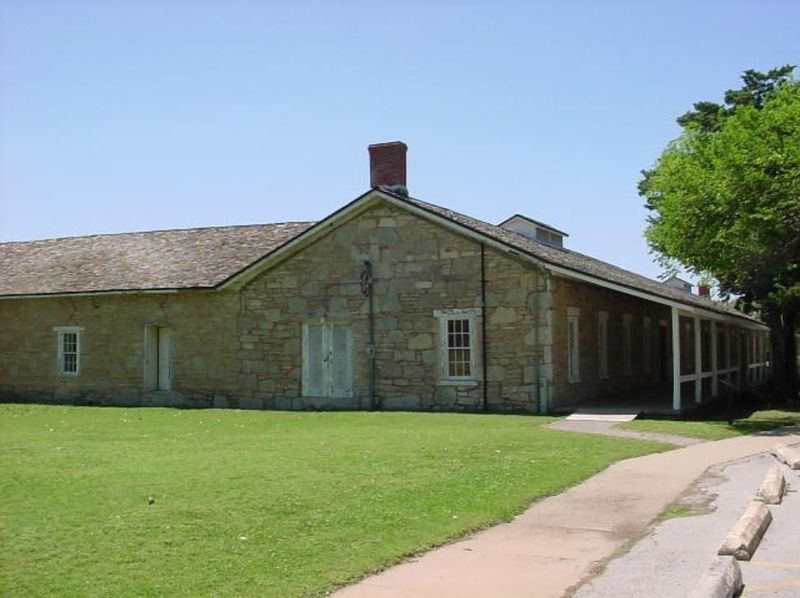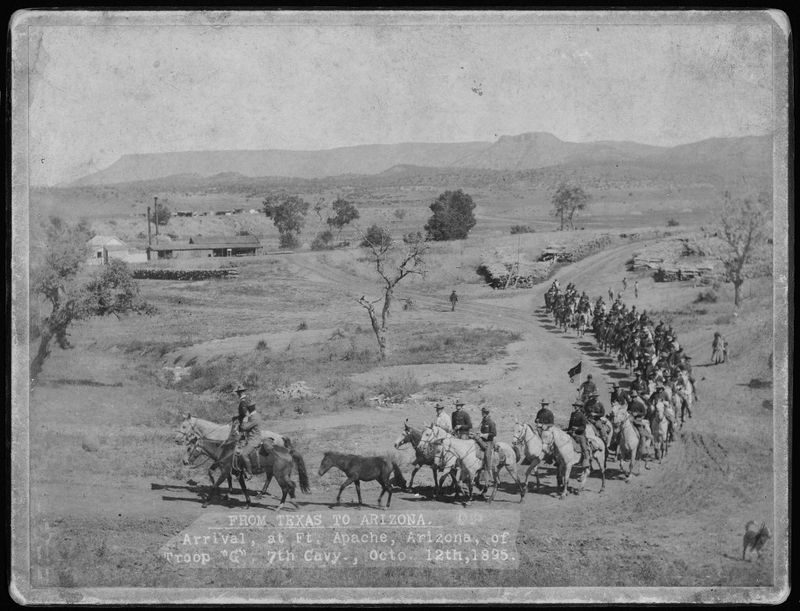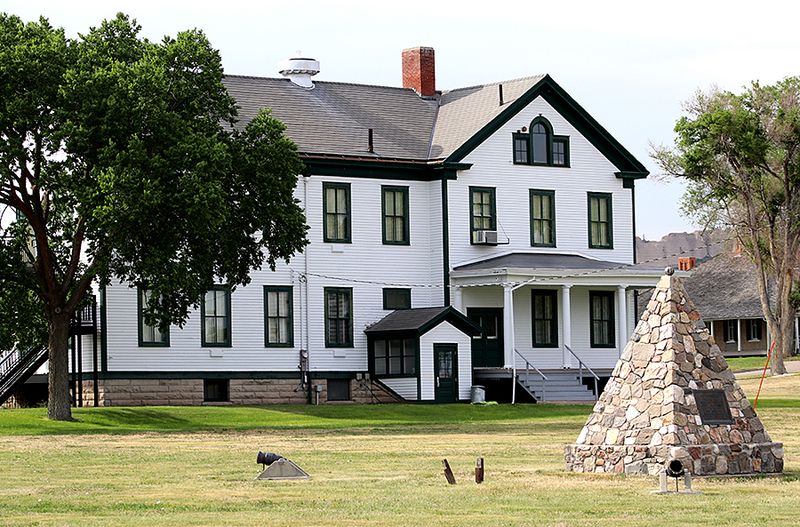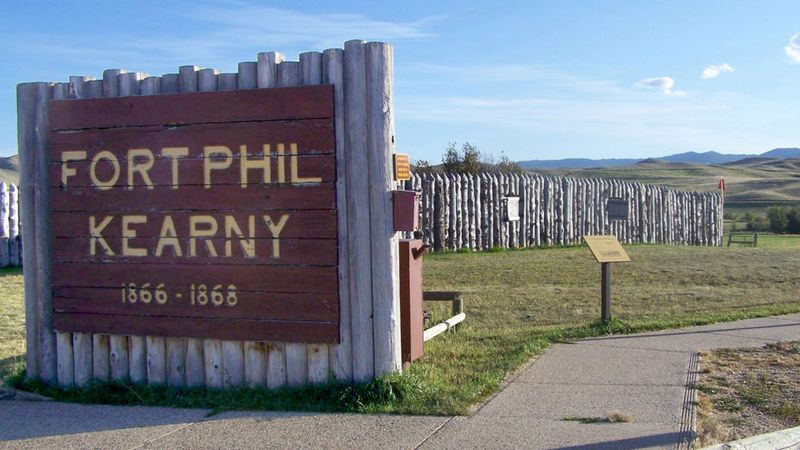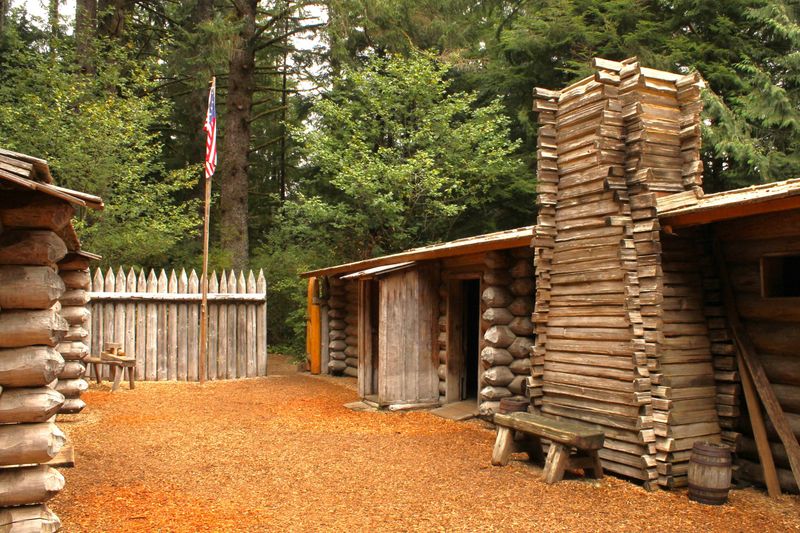Explore the fascinating history of 15 pivotal frontier forts that shaped American history. These forts played essential roles in wars, treaties, and the expansion of the United States. From the Revolutionary War to conflicts with Native American tribes, each fort tells a unique story of courage, strategy, and perseverance. Join us as we delve into the stories of these iconic structures and uncover their lasting impact on the nation’s development.
1. Fort Ticonderoga (New York)
Fort Ticonderoga stands as a symbol of early American resilience. Captured in 1775 by Ethan Allen and the Green Mountain Boys, this fort provided crucial artillery for the Siege of Boston. Its strategic location made it a focal point during the French and Indian War and the American Revolution. Imagine the echo of cannon fire across the lake as soldiers defended this key stronghold. Today, it offers a glimpse into the past, with reenactments and tours that bring history to life. A visit to Fort Ticonderoga is a journey back to a time of revolutionary fervor and determination.
2. Fort Pitt (Pennsylvania)
Once a guardian at the confluence of three rivers, Fort Pitt evolved from the ashes of Fort Duquesne. This stronghold became a keystone in Britain’s defense during Pontiac’s Rebellion. Within its walls, settlers found safety and a launching point westward into the Ohio Valley. As a hub of trade and negotiation, Fort Pitt witnessed treaties that shaped the nation’s frontier. Today, remnants of this fort lie within Pittsburgh’s vibrant cityscape, offering a window into the tumultuous era of expansion and ambition. Discover how Fort Pitt’s legacy continues to influence the narrative of American history.
3. Fort McHenry (Maryland)
Fort McHenry’s star-shaped design guards the entrance to Baltimore Harbor. During the War of 1812, its valiant defense inspired Francis Scott Key to pen “The Star-Spangled Banner.” Picture the night sky lit up with rocket fire as soldiers stood firm against British bombardment. This fortification was more than just stone and earth; it became a symbol of American endurance and patriotism. Visitors today can stand where Key witnessed that “dawn’s early light,” and feel the echoes of bravery that continue to inspire. Fort McHenry remains a beacon of national pride and historical significance.
4. Fort Dearborn (Illinois)
Nestled by the Chicago River, Fort Dearborn was a beacon for settlers in an untamed land. Its story is marked by the Battle of Fort Dearborn in 1812, a stark reminder of frontier tensions. Envision the fort’s wooden walls amidst the prairie, a bastion of hope and hardship. The attack, also known as the Fort Dearborn Massacre, highlighted the volatile relationship between settlers and Native tribes. Today, the site is part of Chicago’s vibrant cityscape, where history whispers beneath the urban hustle. Fort Dearborn’s legacy endures as a testament to the perilous journey of early pioneers.
5. Fort Laramie (Wyoming)
Fort Laramie stands where pioneers paused on their westward trek. Established as a trading post, it evolved into a military fort crucial during the Plains Indian Wars. Imagine weary travelers seeking refuge, the fort’s walls a sanctuary on the Oregon Trail. It was here that pivotal treaties were signed, attempts to forge peace between settlers and Native tribes. Though many agreements faltered, Fort Laramie remains a testament to hope and hardship in pursuit of manifest destiny. Today, visitors can walk the grounds and feel the pulse of history that shaped America’s indomitable spirit.
6. Fort Bridger (Wyoming)
Founded by mountain man Jim Bridger, Fort Bridger became an essential resupply point for westward-bound pioneers. Picture the bustling activity as travelers paused for supplies and respite. Initially a fur trading post, it transitioned into a military fort, reflecting the shifting dynamics of frontier life. The fort’s role on the Oregon, California, and Mormon Trails underscores its importance in American expansion. Today, it stands as a tribute to the adventurous spirit that propelled the nation’s growth. Explore the reconstructed buildings and imagine the stories of those who passed through this historic gateway.
7. Fort Leavenworth (Kansas)
Fort Leavenworth is a cornerstone of military tradition, founded in 1827 as one of the first permanent forts west of the Missouri River. Envision the march of soldiers embarking on expeditions into the unknown. This fort became a vital training center, shaping countless military leaders. Its redbrick architecture speaks of an enduring legacy in American defense. As a hub of military education and innovation, Fort Leavenworth continues to influence modern strategies. Visitors can explore its rich history and witness the centuries-old traditions that have fortified the nation’s defense and development.
8. Fort Union (New Mexico)
Amid the vast New Mexican plains, Fort Union served as a lifeline for the Southwest. Established as a supply depot, it was pivotal during the Mexican-American War. Picture soldiers and traders bustling in this hub on the Santa Fe Trail. Fort Union played a role in conflicts with the Navajo and Apache, a testament to its strategic importance. Although now in ruins, it offers a glimpse into the rugged frontier life. Explore the remnants of adobe walls and imagine the stories of conflict and cooperation in this unforgiving landscape. Fort Union remains a relic of the American frontier spirit.
9. Fort Sumter (South Carolina)
Fort Sumter’s name echoes in the annals of history as the spark of the Civil War. Imagine the tension as the first shots were fired, marking the beginning of a national upheaval. This coastal fort became a symbol of the fierce divide between North and South. Built on an island at Charleston Harbor’s entrance, it withstood bombardment as a flashpoint in debates over federal authority. Today, visitors can ferry to this storied site and stand within its walls, reflecting on the conflict that profoundly shaped the United States. Fort Sumter’s iconic role endures in the narrative of American identity.
10. Fort Sill (Oklahoma)
Fort Sill arose in the Indian Territory as a bulwark during the Red River War. Picture the fort bustling with soldiers tasked with controlling Plains tribes. Its history is intertwined with figures like Geronimo, who was held here after his surrender. Fort Sill’s role in the westward expansion demonstrates the complexities of frontier military strategy. Today, it remains an active military installation and a testament to the evolving narrative of the American West. Explore the fort’s museum and grounds to uncover stories of conflict and resolution that shaped national progress.
11. Fort Apache (Arizona)
Central to the Apache Wars, Fort Apache stands as a testament to frontier conflict and resolution. Imagine the tension as campaigns against leaders like Geronimo and Cochise unfolded. This fort was a hub of military strategy, bridging cultures and conflict in the rugged Arizona terrain. Its legacy is marked by the perseverance of both soldiers and Native tribes. Today, visitors can explore this historic site to gain insights into these tumultuous times. Fort Apache offers a window into the struggles and strategies that defined an era of American expansion and reconciliation.
12. Fort Bowie (Arizona)
Guarding the crucial Apache Pass, Fort Bowie was at the heart of the Chiricahua Apache conflicts. The Bascom Affair of 1861, a catalyst for warfare, unfolded here, setting the stage for decades of strife. Visualize the rocky landscape where soldiers and Apache warriors clashed. This fort represents the harsh realities of frontier life and the struggle for control over vital land. Though now in ruins, Fort Bowie’s remnants whisper stories of resilience and resistance. Visitors can hike to the site, experiencing the solitude of the desert and the echoes of pivotal historical events.
13. Fort Robinson (Nebraska)
Fort Robinson’s history is etched with moments of triumph and tragedy. Picture the surrender and subsequent death of Crazy Horse here in 1877, a pivotal moment in the Great Sioux War. This fort served as a crucial outpost in the American West, witnessing the ebb and flow of conflict between Native tribes and the expanding nation. Today, it offers a poignant reminder of the complex interactions that shaped the frontier. Visitors can explore the grounds and reflect on the fort’s dual legacy of military might and cultural upheaval. Fort Robinson stands as a testament to a complex historical narrative.
14. Fort Phil Kearny (Wyoming)
Amidst the scenic beauty of the Powder River Basin, Fort Phil Kearny is remembered for the Fetterman Fight of 1866—a significant Native victory during Red Cloud’s War. Imagine the tension as conflict brewed over the Bozeman Trail. This fort symbolizes the fierce resistance against westward expansion. Its abandonment reflects the shifting strategies of an expanding nation. Today, visitors can explore reconstructed parts of the fort and learn about the complex dynamics of frontier life. Fort Phil Kearny remains a powerful symbol of Native resistance and the tumultuous path of American progress.
15. Fort Clatsop (Oregon)
Fort Clatsop marks the end of Lewis and Clark’s historic expedition to the Pacific. Envision the explorers spending a harsh winter here, mapping the unknown lands. This modest fort symbolizes the culmination of a journey that expanded America’s horizons. The cramped quarters tell of the challenges faced by the Corps of Discovery. Today, a replica fort allows visitors to step back into the era of exploration and discovery. Fort Clatsop stands as a testament to the adventurous spirit that charted new territories and laid claim to the vastness of the Pacific Northwest.
